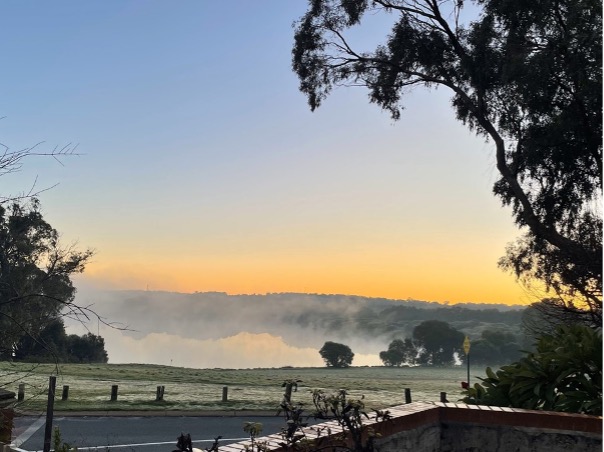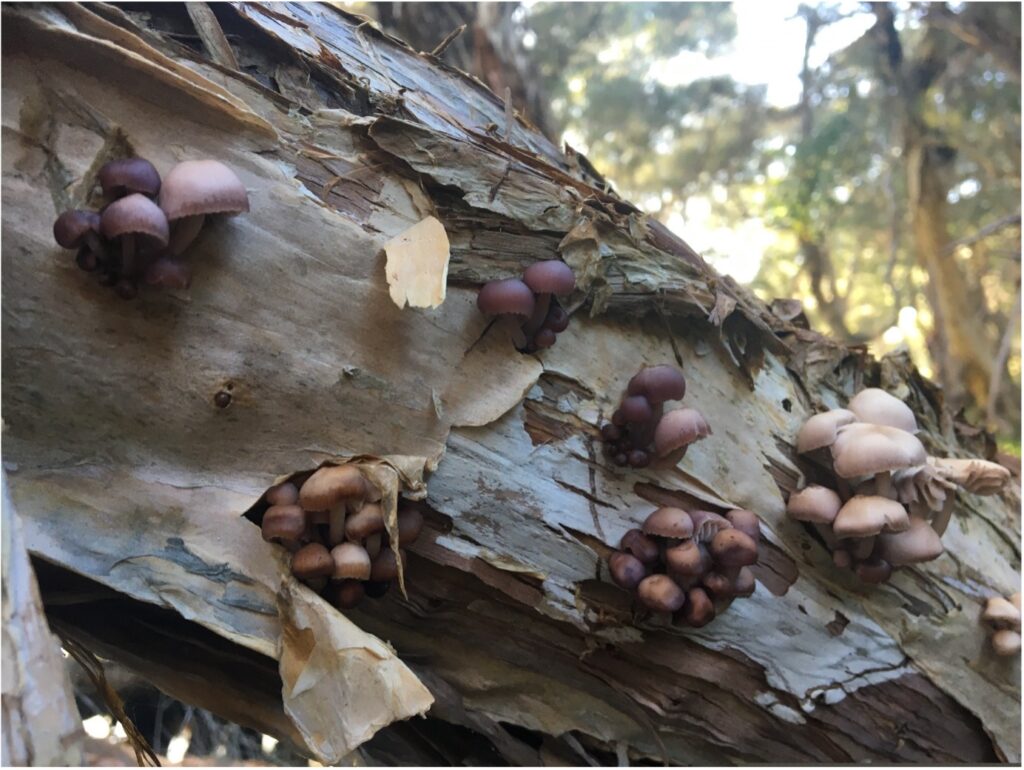NS Branch Golly Walk, 28 June 2023
A four-degree morning didn’t stop eight members and a visitor gathering on the slope overlooking the southern end of Lake Joondalup and the Beenyup Channel for our guided tour by Woodvale Friends of Beenyup Channel convenor Bryan Saunders. Steam was still rising from the lake, as Bryan told us about the local hydrology – groundwater flowing into the lake from the east and surface water from the south via the Beenyup Channel.

Until about six years ago, the lake dried out annually; last year, the water level was the highest Bryan had seen in the 25 years he had lived in Woodvale. However, he told us that high water level has positive and negative environmental effects. Deeper water has resulted in colder water temperatures which in turn has thankfully reduced the ability of midge to breed. On the other hand, the flooding of the grassy banks during winter has provided the ideal environment for the carp to spawn in. Bryan explained that each carp produces around a million eggs with a sticky coating that sticks to the grass.
The area would have been a Banksia woodland before European settlement when it was cleared for farming. Several very large olive trees, with two heritage-listed heritage trees, are the only signs of this period.
Very old olive tree

The land now forms part of the Yellagonga Regional Park, most of which is managed by the Department of Biodiversity, Conservation and Attractions (DBCA).
Fortunately, the settlers did not clear all the trees along the channel. Walking along its edge, we were surrounded by a mix of Tuart, Swamp Melaleuca and Swamp Banksia, while the understory contained a mix of sedges.

Since the friends’ group removed the typha, the remnant Baumea articulata has flourished and is now supplemented by an annual planting of eight other sedge species.
Our first foray to the water’s edge resulted in the discovery of two fungi. The first one is small clumps of Mycena clarkeana growing on a fallen paperbark. The second was a bracket growing on a high branch. Later, we found two groups of orange fungi; the first was possibly Laccaria lateritia, while the second was not identified. We also found a single Xerula australis.



We thought we spotted two of the half dozen Yellow-billed Spoonbills in the area through the undergrowth at one of our many stops to walk through the trees to get to the channel. However, it was a single Spoonbill and an Australian White Ibis. All up, we saw 21 bird species. We heard one motorbike frog. Too cold for reptiles, although Bryan did warn us that tiger snakes are occasionally spotted. Unfortunately, like many places around the lake, there was evidence of foxes having dug up the nests of the Southwestern Snake-necked Turtles.
Murdoch University has been contracted by DBCA this year to conduct electro-fishing for carp. On the first day, 150-200 kg of carp was recovered, including a 9.5kg specimen almost one metre in length. The more recent fishing expedition was less successful, probably because of the higher water level. It was postulated that the recent rain meant a lowering of the salinity, which reduced the conductivity of the electric pulse used to stun the fish.

Our final stop was to examine the nesting boxes built and erected by Simon Cherriman. Simon designed different-sized boxes to attract Wood Ducks, Carnaby Cockatoos and small birds.
Don Poynton
All Images by Don Poynton

